In the ever-expanding universe of Hollywood franchises, audiences have grown increasingly smitten with action-packed, adventure-laden films—especially those starring gallant heroes at the forefront.
Sure, you might casually think that the high-stakes battles between good and evil serve merely as fleeting moments of absolute violence, engaging yet soon forgotten.
However, have you ever stopped to dig a little deeper and ponder how often innocent bystanders end up as collateral damage in these epic showdowns?
While it's easy to acknowledge the visible casualties, some take place behind the scenes, hidden from our scrutiny but not any less impactful.
The truth is, heroes—intentional or not—sometimes cause irreversible harm to people who were just in the wrong place at the wrong time.
So we've assembled a thought-provoking list to bring attention to this lesser-discussed aspect of our beloved action films.
Here, we spotlight 10 instances where heroes, whether from the Marvel Cinematic Universe, Star Wars's expansive realm, or other storied franchises, have inadvertently caused the demise of innocent individuals.
Get ready to see some of your favorite heroes in a different light. Let's delve in, shall we?
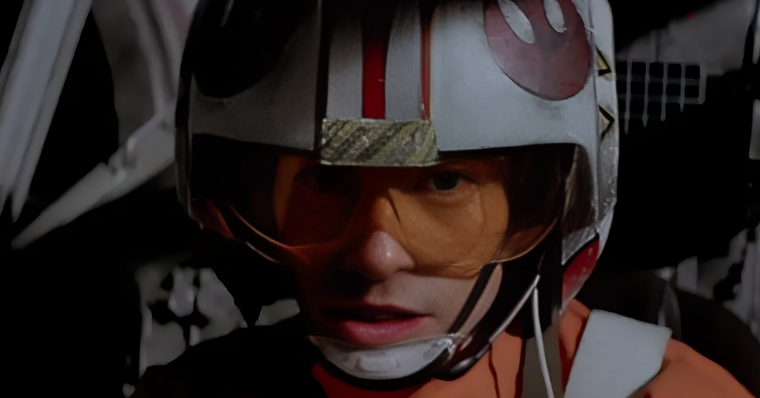
Luke Skywalker - Star Wars: Episode IV – A New Hope
The Star Wars universe is a sprawling epic, awash with grand ships and entire squadrons being decimated in the cosmic struggle against tyrannical forces.
But let's take a moment to rewind the tapes to the very first film that blasted onto our screens: "Star Wars: Episode IV – A New Hope."
In that seminal cinematic moment, when Luke Skywalker leads the charge to annihilate the Death Star, have you ever thought about who was receiving that laser-guided justice?
The Death Star wasn't merely a hollow ball of malevolence but a thriving community home to well over two million souls.
Sure, a hefty chunk of the Death Star's inhabitants were indeed military personnel—individuals directly implicated in the Empire's grand designs.
However, we mustn't overlook the slice of that population pie chart filled with ordinary, hardworking folks: independent contractors, freelance builders, janitors, and even the culinary team behind the Galactic Empire's cafeteria!
To clarify, this isn't an exercise in hand-wringing moral equivocation. The Death Star was a weapon of astronomical devastation; obliterating it was a necessary evil, given its imminent threat to pretty much every life form in the galaxy.
But shedding light on these unspoken casualties adds layers of complexity to what might otherwise be a clear-cut tale of heroes and villains.
While Luke Skywalker's deed was undoubtedly heroic and preserved countless lives across the galaxy, it also offers an uncomfortable lesson.
Heroic actions often come at a cost, sometimes exacted from those who never chose to be a part of the conflict in the first place. Even heroes of the Rebel Alliance must grapple with the ripple effects of their grand gestures.

T-800 - Terminator 2: Judgment Day (1991)
In "Terminator 2: Judgment Day," we see a whole new side of the T-800, brought to life with unforgettable gravitas by Arnold Schwarzenegger.
This hulking mass of metal and advanced AI listens—really listens—when John Connor tells him, point-blank, that it's game over for offing innocent bystanders.
The result? A rather notable plummet in the body count, at least when compared to the original bloodbath in "The Terminator."
As the plot unfolds, we observe the T-800 stepping gingerly around the life-and-death tightrope. He's not exactly handing out daisies, but he's also not vaporizing everyone who gets in his way.
Yet, let's not toss the confetti just yet. Remember the part where he conceals a shotgun in a box of roses at the mall? If we read between the lines, it's not too far-fetched to presume that the shop owner might've had a rather abrupt 'end of shift,' to say the least.
Oh, and let's not forget the vehicular mayhem. The legendary motorcycle chase scene is cinema gold, but have you ever thought about the collateral wreckage?
Cars flipped, trucks exploded, and who knows what kind of domino effect that had on insurance premiums across the state.
That's a whole slew of vehicle owners who likely found themselves asking questions about the specifics of their insurance policies they'd never needed to before.
The point here is not to paint the T-800 as the villain—he was reprogrammed to protect, after all. Rather, it's a nod to the complexities and nuances that come with heroic interventions.
When we’re caught up in the exhilaration of a high-speed chase or an epic showdown, it's easy to overlook the ripples those actions might create.
In the expansive universes of films like "Terminator 2," the line between hero and antihero can sometimes blur, adding intriguing layers to characters we thought we knew so well.
So yes, heroes can make ethically gray choices. And yes, sometimes those choices have unintended consequences. It's all part of the messy, intricate tapestry that makes these stories so darn compelling.
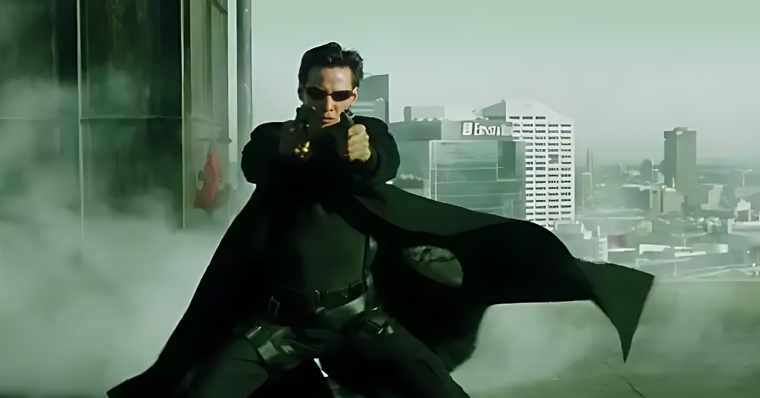
Neo - Matrix (1999)
In "The Matrix," Keanu Reeves' Neo is on a desperate quest to save humanity from the oppressive yoke of machine overlords. Sounds noble enough, doesn't it?
But what about the 'little guys' caught up in this digital web of insurgency? You know, the security guards, the police officers, and the run-of-the-mill office workers? They're the underbelly of the Matrix, in roles they didn't necessarily sign up for.
Take that iconic scene where Neo joins forces with Trinity to rescue Morpheus. Guns blazing, slow-motion aerial kicks, and pulse-pounding music—the whole shebang. As awe-inspiring as that sequence is, it leaves behind a wake of casualties.
These aren't monstrous agents or evil software programs; they're regular Joes and Janes plugged into the Matrix, doing their 9 to 5, blissfully unaware of the cosmic battle waged around them.
Here’s where Morpheus' philosophy kicks in, clouding the waters a bit. He tells Neo that anyone ingrained in the system is, by default, an adversary.
So are these casualties collateral damage or justifiable targets? That's the gray area that makes "The Matrix" such an engrossing experience. It's not merely a high-octane action flick; it's a rollercoaster of moral quandaries.
Let's pivot for a second and put Neo's actions in the grand tapestry of what he’s aiming for the liberation of humankind. That's no small feat, and perhaps the ethical tightrope he's walking is a necessary aspect of the burden he bears.
Yet the 'little guys' who become casualties force us to ponder the concept of 'acceptable losses' in the war for the greater good.
And let's not forget that Neo himself was once one of these cogs in the machine, meandering through life as Mr. Anderson, computer hacker extraordinaire and unwitting participant in the system he’d eventually come to topple.
Makes you wonder, doesn't it? If Neo had crossed paths with himself during one of his high-stakes missions, would he pull the trigger?
"The Matrix," like other films of its genre, offers a compelling look into the multifaceted nature of heroism. Sometimes the hero's journey involves grappling with uncomfortable truths and making choices that tread perilously close to the ethical edge.
And that's what gives the story its gravity, the elusive combination of spectacle and soul-searching that keeps us coming back for more.
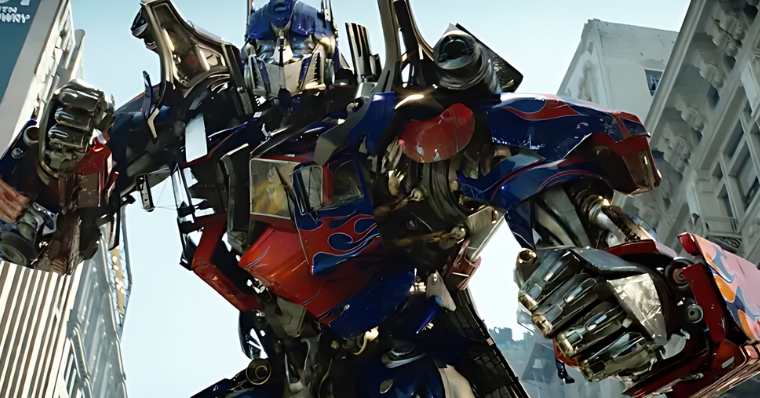
Autobots - Transformers (2007)
The epic showdown between Autobots and Decepticons isn't confined to distant planets or the inky depths of space. Nope, they bring their eternal feud straight to Earth, turning our familiar landscapes into battlegrounds.
I mean, sure, it’s thrilling to see Optimus Prime and Megatron duke it out, but what about the, you know, humans caught in the robot-on-robot crossfire?
The third act of the first "Transformers" movie turns this dilemma to 11. Skyscrapers crumble, and urban locales get reduced to rubble as these megalithic mechanical beings slug it out for ultimate power.
Optimus Prime, the Autobots' venerable leader, certainly aims to safeguard the mysterious cube—also known as the AllSpark—and humankind along with it. A noble aim, right? Well, sort of.
Here's the rub: Any scenario that includes skyscraper-sized robots wielding weapons of mass destruction isn’t exactly a picnic for the local residents.
This is not your run-of-the-mill fender bender; this is downtown demolition on a celestial scale. It's one thing to root for the Autobots from the safety of your cinema seat; it's another to ponder how any bystander would fare amid the titanic chaos unfolding on the screen.
The war scenario presented creates an atmosphere so hostile that even the Autobots, designed for combat, find it difficult to navigate.
To put it bluntly, there's no way to finesse a giant robot fight in downtown Los Angeles or anywhere else without someone's grandma having to duck and cover under her kitchen table.
It's a catastrophic clash that makes one wonder—what's the human cost of an intergalactic grudge match?
The Autobots might be the good guys in the broader "Transformers" narrative, but their good intentions often manifest in ways that are problematic for us Earthlings.
This juxtaposition of high-stakes valor and unintended harm keeps the story intriguing. The ethical wrinkles of their actions keep audiences questioning: At what point does the pursuit of a greater good start to overshadow the immediate harm it causes?
And that’s the kind of query that gives a sci-fi action blockbuster its intellectual punch.

Tony Stark - Iron Man (2008)
When Tony Stark, played by Robert Downey Jr., first burst onto the big screen in 2008's "Iron Man," it was easy to see him as a tech-savvy playboy with an ego the size of his bank account.
Sure, he's brilliant and charismatic, but let’s not kid ourselves—before the guy became Iron Man, he was basically the weaponized version of Bill Gates.
His Stark Industries was a global leader in arms manufacturing, and you can bet those military-grade products weren't being used for opening cans of tuna.
We're talking about high-tech instruments of destruction sold to the highest bidder, no questions asked.
Now, you don't have to be a genius to figure out that this sort of business isn't exactly humanitarian work. Before donning his iconic Iron Man suit, Tony Stark had an invisible yet inextricable link to global conflicts and strife.
It's pretty hard to count the lives affected, but it's not a stretch to say that the technology created by Stark Industries could be responsible for hundreds, or maybe even thousands, of deaths worldwide.
It wasn't until that fateful trip to Afghanistan, where Stark tasted his destructive medicine that he experienced a full-on moral epiphany.
He literally had to get blown up by his own tech to realize that he was not the hero in this story—not yet, at least. If it weren't for that near-death experience, which made him rethink his life choices, who knows how many more innocent lives would've been caught up in the havoc caused by his technological inventions?
This significant course correction is what sets the stage for Tony Stark's journey from arrogant industrialist to bona fide superhero.
It’s not just about a billionaire creating an awesome suit of armor, although it's darn cool; it’s also about the radical transformation of a man burdened by the ethical weight of his previous life choices.
What’s most captivating here is not the spectacle of CGI explosions and aerial dogfights—though they're cool as all get out—it's the evolution of Tony Stark as he grapples with the implications of his past deeds.
So, Tony Stark’s journey in "Iron Man" isn't just a story of heroism; it's a tale of redemption, of taking responsibility for the wreckage—literal and figurative—left in the wake of one's actions.
It's not just Stark’s armor that's made of iron; his will to change and make amends has that same metal-clad resilience.
And that's the enigmatic allure of Iron Man: a superhero complex enough to question himself, skilled enough to make a difference, and human enough to understand the consequences of his own flaws.

Hulk - The Incredible Hulk (2008)
Bruce Banner, also known as the Hulk, is essentially a walking WMD—Weapon of Mass Destruction—that you can't easily disarm. You can't negotiate with him when he's angry; let's face it, he's always angry.
But, in the 2008 flick "The Incredible Hulk," we witness an epic showdown that's like dropping two nuclear bombs in a wrestling ring.
Enter the Abomination, a villainous creature that’s pretty much Hulk’s evil twin in terms of size, strength, and appetite for destruction. The ensuing battle between these two behemoths is nothing short of cataclysmic.
The last act of this film should probably be dubbed 'Destruction Fest 2008.' These two are hurling cars, bashing buildings, and turning the city into their personal demolition derby.
This isn't just a wrestling match; it’s a calamitous spectacle that would make even Michael Bay say, "Whoa, easy there, tiger!"
While Hulk’s heart might be in the right place (if you can even find it beneath those monstrous pecs), his tactics are a bit like trying to put out a fire with a wrecking ball.
It's near impossible to believe that no one got hurt, or worse, in the crossfire of this epic clash. You can’t just fling a sedan into a skyscraper and expect it not to have repercussions for the guy who was just grabbing his morning coffee at the cafe below.
You've got to wonder: Were Hulk's good intentions enough to offset the collateral damage? You could argue that he was trying to save the city from a creature even worse than himself.
A noble cause, no doubt. But what does it matter to the average Jane and Joe who were going about their ordinary day? They're not exactly cheering when they have to dodge falling debris on their lunch break.
The Hulk versus Abomination duel offers us a vivid tableau of moral ambiguity and unintended consequences. Yes, the Hulk may have defeated his monstrous foe, but at what cost?
The ethical dilemma adds layers of complexity to what could easily just be a smash-and-grab story. It pushes us to think about the sacrifices and ethical compromises that often accompany acts of heroism, however well-intended they may be.
So while we may be enamored by the sheer power and spectacle of the Hulk, it's also a stark reminder—no pun intended, Tony—that even heroes can leave a trail of chaos in their wake.
And in the end, it's usually the little guys, the bystanders, the everyday people, who pay the price. It’s a complex narrative woven into a film that, on the surface, seems like just another action-packed superhero movie.
And that is why the tale of the Hulk is as compelling as it is catastrophic.
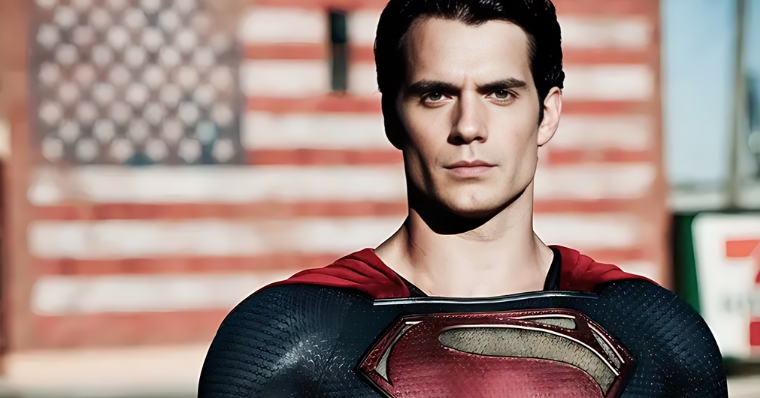
Superman - Man of Steel (2013)
Superman is the gold standard for the spandex-wearing crowd and perhaps the most iconic superhero. Yet, in director Zack Snyder's reimagining of the story in "Man of Steel," the caped wonder finds himself in an ethical quagmire that's as sticky as flypaper.
The film's third act turns Metropolis into a battlefield of biblical proportions, thanks to an epic showdown with the nefarious General Zod.
But here's the catch: it's not all fanfare and fireworks because people—yes, actual human beings—are caught in the crossfire.
Superman may be a symbol of hope and justice, but let's not forget he's still wet behind the ears when it comes to superheroes.
Unfortunately, his inexperience in large-scale disaster management is a factor that the movie does not gloss over. In the midst of skyscrapers tumbling and explosions lighting up the sky like a Fourth of July grand finale, innocent lives are lost.
The film even went so far as to pin a number on it—around 5,000 innocent souls snuffed out amid the chaos.
Let's put a pin in that, shall we? Those unsettling stats directly fuel the plot of the sequel, "Batman v Superman: Dawn of Justice."
Humanity, led by a grumbling and disgruntled Batman, directly confronts Superman over his cataclysmic actions. But here’s where the narrative complexity kicks in.
Should we blame Superman for doing his best, albeit naively, to vanquish a villain capable of destroying the entire planet?
This pulls us into a swirling vortex of moral debate. What's worse? The calculated but tragic consequences of Superman's intervention or the unimaginable devastation that would have ensued if he had simply opted to sit this one out?
That's like choosing between a rock and a hard place if the rock could obliterate cities and the hard place could end civilizations.
The poignant ripple effect of Superman's actions forms the crux of subsequent storylines, adding layers of moral ambiguity that one doesn't usually associate with the big blue boy scout.
The "Man of Steel" doesn’t just ask us to witness the spectacle of a superhero; it implores us to grapple with the murky underbelly of heroism itself. It asks us to acknowledge that sometimes, in the pursuit of a greater good, lesser evils may not be avoidable.
This offers a more nuanced view of superhero ethics than we typically get. It asks us to consider the immediate fallout of heroic actions and the long-term good and bad consequences.
So, while Superman may have been armed with the best intentions and otherworldly powers, the path to heroism is often fraught with landmines that even X-ray vision can’t always detect.
And in the unfurling saga that begins with "Man of Steel," the Man of Tomorrow must grapple with the repercussions today.
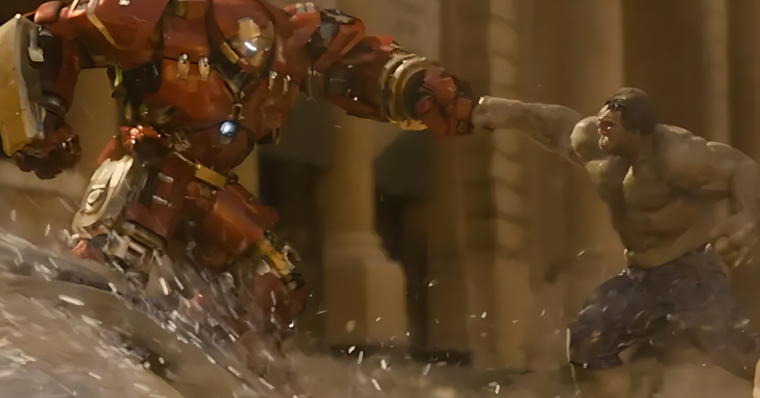
Hulk and Iron Man - Avengers: Age of Ultron (2015)
Marvel has a knack for creating visually stunning scenes that knock us out of our theater seats, but let's face it: sometimes, the superheroes themselves get knocked into moral gray areas.
One such colossal spectacle occurs in "Avengers: Age of Ultron," a blockbuster so riddled with action and chaos that it lays the emotional groundwork for future films like "Captain America: Civil War."
In this particular sequence, Hulk is not exactly in his 'happy place,' to put it mildly. Courtesy of the Scarlet Witch's mind-bending powers, our favorite green behemoth loses his typical self-restraint and goes on a demolition spree in Sokovia.
This prompts Tony Stark—no slouch in the overkill department—to suit up in his specially designed Hulkbuster armor. His mission: is to keep Hulk from turning the city into a life-sized rubble puzzle.
What unfolds is an astonishing ballet of destruction. We’re talking leveled buildings, upturned pavement, and concrete confetti spewing out like a geyser.
It's a feast for the eyes but not so much for the conscience. Because let's be brutally honest: there's no way every innocent person got out of that pandemonium unscathed.
The ruckus was seismic. It wasn't just a few fender-benders or minor property damage; we're talking about entire skyscrapers being turned into modern art installations of twisted steel and shattered glass.
When you consider the scale of devastation, it becomes glaringly obvious that some people were bound to get caught in the wake of the superpowered smackdown.
So, while the duel between Iron Man and Hulk may be a merchandising dream come true (who wouldn't want a Hulkbuster action figure?), it’s also the sort of real-world nightmare that makes people question the role and responsibilities of superheroes.
This scene doesn’t just go for the 'wow' factor; it also catalyzes a new layer of dramatic tension that boils over into future MCU storylines.
Remember, the aftermath of this not-so-friendly neighborhood brawl serves as one of the principal reasons for the divisive Superhero Registration Act we see in "Captain America: Civil War."
So, yes, the sequence is thrilling, but it's not all high-fives and post-fight shawarmas; it leaves us grappling with the sobering implications of unleashing superhuman forces in densely populated urban areas.
The Hulk and Iron Man may be powerhouses of both brain and brawn. Still, this spectacular clash reminds us that even heroes have to answer for their actions and that sometimes, doing what's 'necessary' comes at an unfathomable human cost.
It’s a wakeup call in a world enamored by capes and masks, pushing us to ponder just what kind of havoc heroes can wreak—intentional or not—when left unchecked.
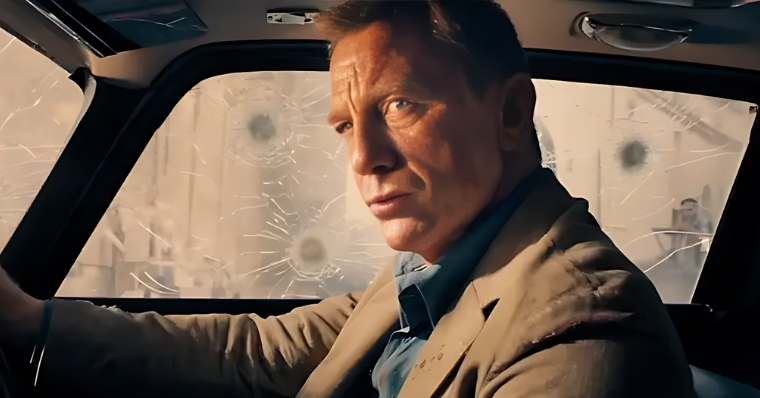
James Bond - 007: No Time to Die (2021)
Sure, James Bond has a way of sweeping us off our feet with his lethal charisma and death-defying stunts, but let’s pump the brakes on the glamour for a second.
In "007: No Time to Die," the dashing spy puts the pedal to the metal in one of the most adrenaline-pumping chase scenes the franchise has ever seen.
It's an extravaganza of high-speed cars, even higher-speed motorcycles, roaring engines, tire smoke, gunfire, and fireworks of the exploding kind. The catch? All this heart-pounding action unfolds smack in the middle of a bustling city during business hours.
The chase isn’t some late-night escapade on empty streets; it's a full-blown spectacle happening under the bright daylight. This daylight factor escalates things from risky to downright alarming.
People are out and about, going to their jobs, buying groceries, or maybe taking their kids to the park. In walks Bond—well, drives actually, like a bat out of hell—and suddenly, a routine day becomes an unwitting cameo in an action movie with real bullets and real dangers.
As 007's Aston Martin skids, dodges, and accelerates, you've got to wonder: What about Mrs. Johnson walking her poodle or the barista named Tim taking his smoke break?
It's high time we acknowledge the collateral damage lurking behind those cool, slo-mo explosions and that iconic 007 theme music. The sad reality? It’s nearly impossible to believe that every Average Joe and Jane got out of that tumultuous situation unscathed.
Sure, Bond always aims to save the world from megalomaniac villains with plans ripped straight out of comic books, but the sobering truth is that his globe-trotting adventures often blur the lines between heroism and recklessness.
Sometimes, the methods he employs to "neutralize threats" generate new threats altogether, especially for the innocent bystanders who never asked to be part of his latest international escapade.
And it's not like MI6's favorite son doesn't realize the stakes; he does. He's all too aware that his missions are fraught with perils that go beyond the usual spy-vs-spy theatrics.
But that doesn't make the collateral fallout any less disturbing. So while you're sitting on the edge of your seat, eyes widened, and pulse racing during that epic chase, it's worth pondering the unsung casualties of Bond's high-octane lifestyle.
The uncomfortable tension between the wow-factor and the whoa-there-nelly-factor is a paradox that’s long been embedded in the world of James Bond.
As much as we admire his grit and cunning, "007: No Time to Die" serves as a jolting reminder that every action—even those done in the name of queen and country—has its repercussions.
It’s not just the villains who are playing with fire; our beloved Bond is also striking the match.
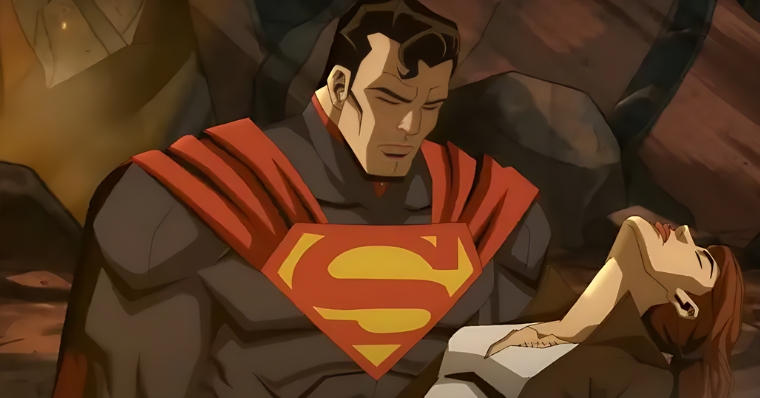
Superman - Injustice (2021)
In the emotional minefield that is the world of superheroes and their complex moralities, few instances hold a candle to the gut-wrenching episode in "Injustice."
Based on the comics and video games that bear the same title, this narrative arc crafts an intense cocktail of manipulation, hallucination, and devastating outcomes.
The fiendish plot originates from none other than the Joker, who conspires to bring down Superman in an unimaginably cruel way.
Let's delve into the twisted mechanics of it. The Joker isn't content with just your run-of-the-mill villainy; he goes above and beyond.
By combining Scarecrow’s fear toxin with kryptonite, he creates a substance so potent that it sends Clark Kent into a nightmarish delirium. Now, under the influence of this malevolent cocktail, Superman sees not the Joker but his long-standing nemesis, Apocalypse.
Enter Lois Lane, Superman's love, and, in this nightmarish scenario, the one carrying their unborn child. Intent on protecting her, Superman's good intentions disastrously backfire.
As Batman's urgent pleas echo in the background, a scream encapsulated in the vacuum of space, Superman hurls what he believes to be the Apocalypse into the cold void.
The grim realization only dawns on him later that it was not the Apocalypse he launched into space but Lois, the love of his life.
But wait, the Joker's devilish scheme has more layers than an onion—and every layer can make you cry. Lois Lane wasn't just an innocent life tragically lost; she was the linchpin in a more nefarious device.
The Joker had rigged Lois' heartbeat to trigger an atomic bomb set to lay waste to Metropolis. The moment Superman unwittingly kills Lois in his haze, he dooms an entire city. The bomb detonates, reducing Metropolis to nothing but smoldering ruins.
The ripples of this cataclysmic event extend far beyond the immediate tragedy. It’s a disastrous confluence of trust shattered, a hero’s ethics compromised, and countless innocent lives lost.
Superman, the very symbol of hope and justice, is hoodwinked into becoming an instrument of massive destruction.
The city he swore to protect becomes a casualty of his manipulated rage, and the woman he loved becomes the unwitting trigger for it all.
It’s more than just a bad day for Superman; it’s an existential crisis, a plummet from grace that questions the very essence of heroism.
In that dark moment, it's not just buildings that collapse or people that perish; it's the dilapidation of a symbol, a falling star that once stood for something pure and noble.
"Injustice" shows us not just the fragility of life but the fragility of ideals, of the lines we draw in the sand that turn out to be not so indelible after all.
While we may revel in the triumphs and cheer at the rescues our superheroes perform, "Injustice" is a stark, soul-churning reminder that even demigods can falter, even symbols can tarnish.
Even the best intentions can pave roads to catastrophic destinations. And what's left in the wake? Just a haunting echo of what could've been, what should've been, and the incalculable cost of one harrowing mistake.











